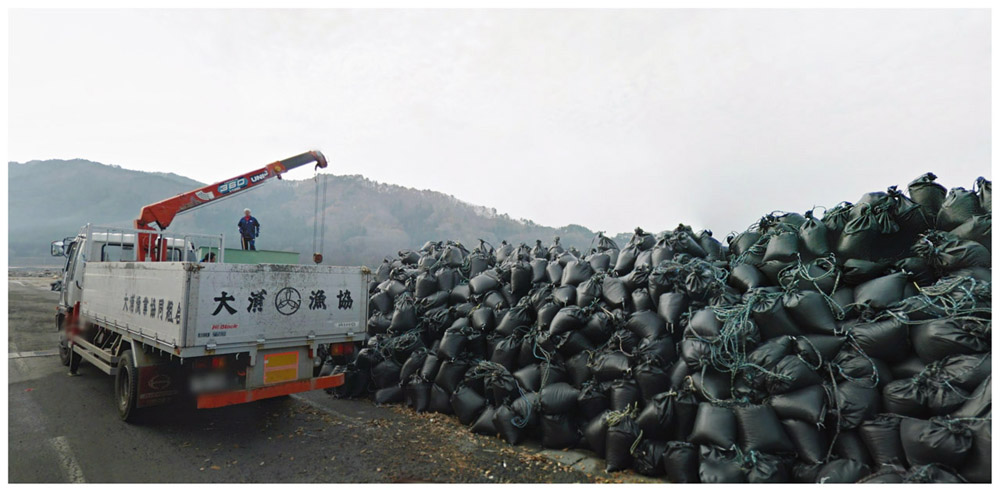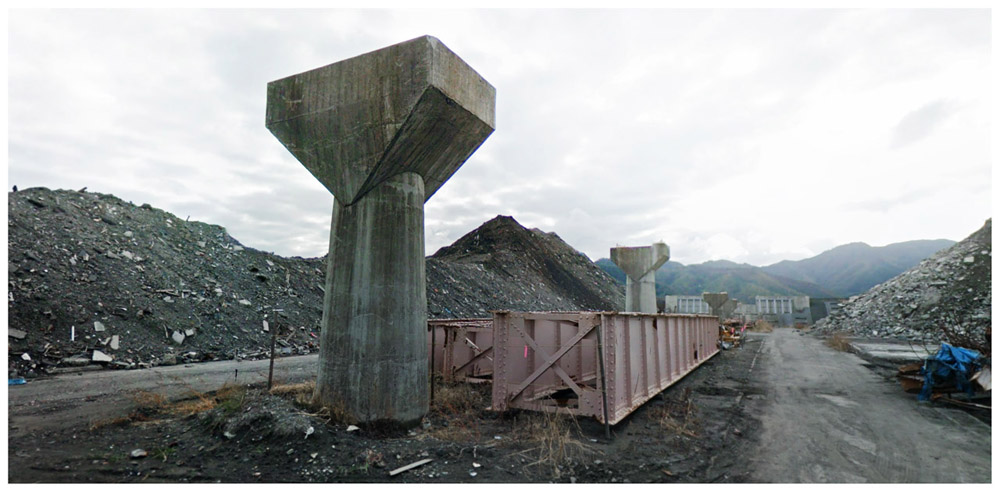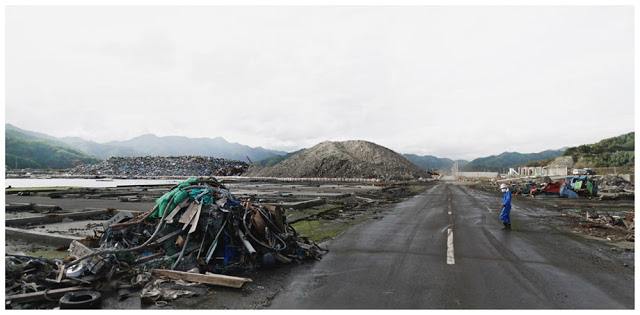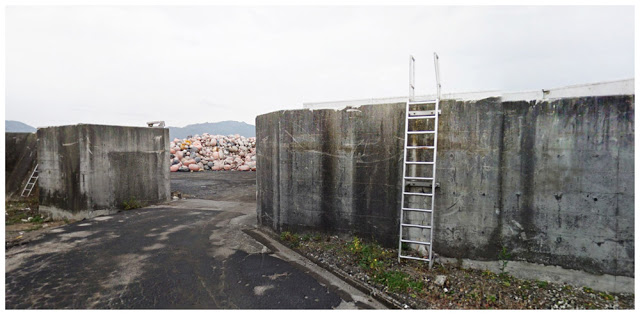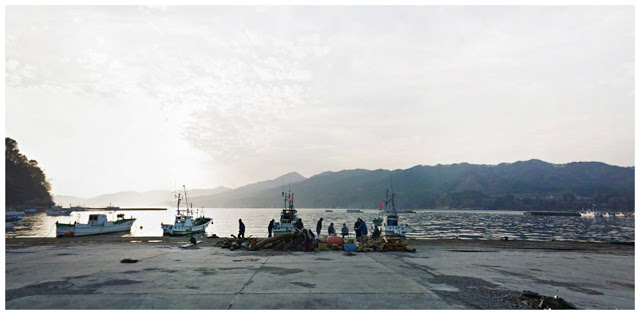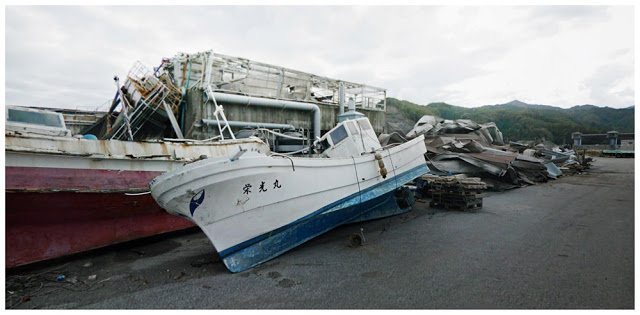Aaron Hobson: The Tōhoku Project
My good friend Aaron Hobson, The Cinemascapist, was recently in Los Angeles, where he was working on a film. We met at a rooftop bar one evening and over drinks and a view of the Hollywood Hills, Aaron and I got caught up to speed.
Aaron has been working on a project about Google street views, and his international Internet street view surfing (done from his home in the Adirondacks), landed him in the Tohoku region of Japan that was devastated from the 2011 Tsunami/Earthquake. Seeing the current state of affairs in this area Japan hit him in a profound way and he knew he had to do something. When Aaron showed me this image, it so defined what that region faces…one lone man sweeping the road of a devastated landscape.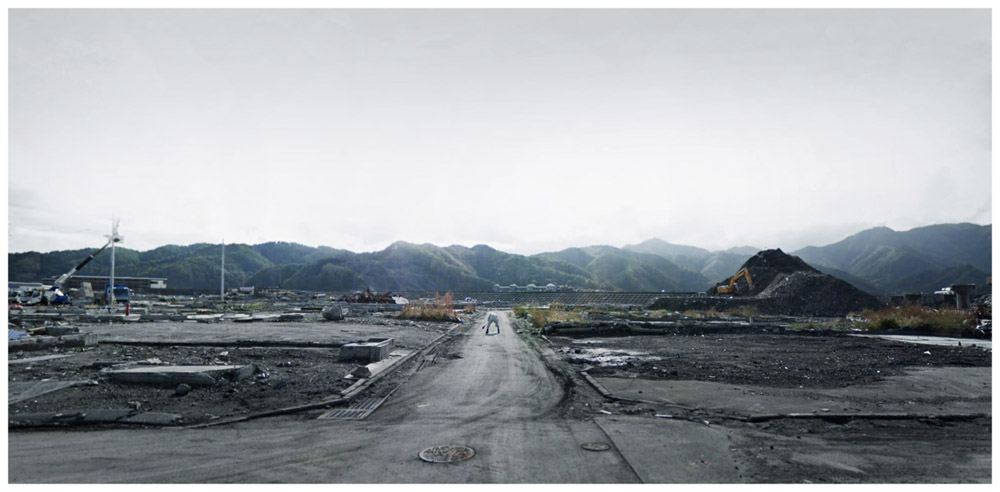
I’m turning over the rest of this post to Aaron, so he can share his plans to help:
So a few months ago I shared my streetview series from the Tohoku region of Japan that was devastated from the 2011 Tsunami/Earthquake. Since then I have not been able to get the images out of my head. I think in part because I can relate to the people in these small remote villages as I also live a very similar remote life.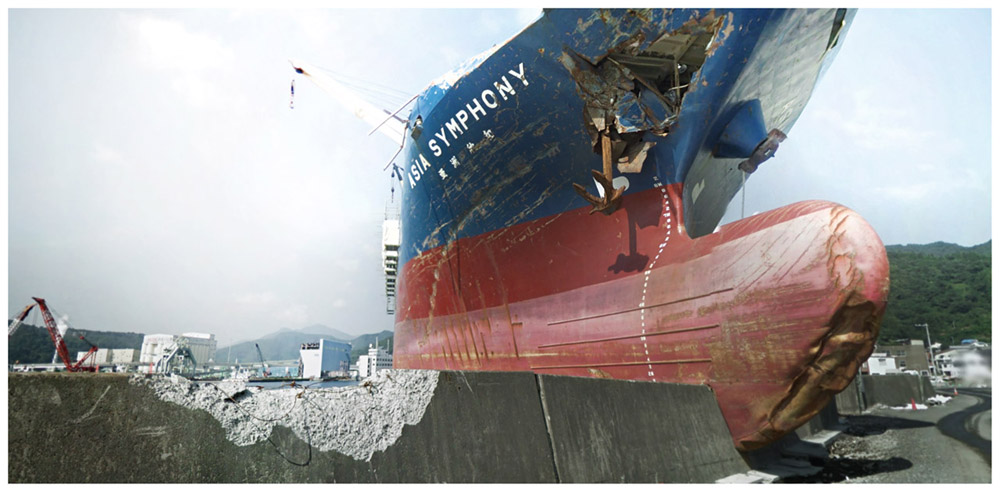
I have found myself thinking about them over and over again and realize I need to help. Not by taking photos to make a donation to red cross, but actually hands-on physical labor. I found a great nonprofit group that will put me up and I will be working 10-12 hour days rebuilding homes and cleaning up the miles and miles of debris that still remains. I also hope to raise awareness again for the region. The scale of damage is mind boggling. They estimate anywhere from 10-15 years to rebuild. The damage was greater than Hiroshima and Nagasaki combined.
I hope to raise enough funds to stay there for a bit of time rebuilding and taking photos in what little free time I have so that I can do an annual trip to document the rebuild over the next 10 years. 100% proceeds go to requisite travel with all remaining funds going to the relief group that I will be working with.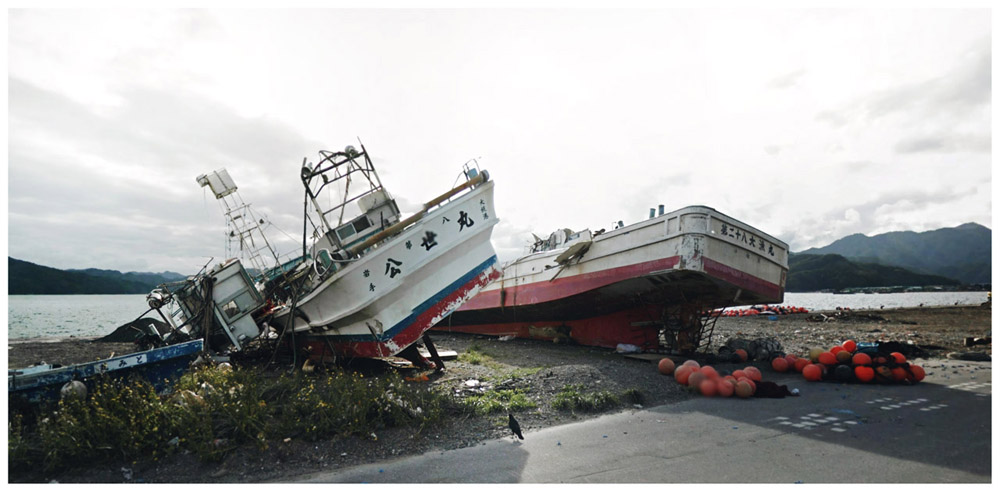
Anyway, long story short, images are priced to sell at $25 for signed 20″x10″ prints in edition of 25. To get the ball rolling, the well known collector/curater John A. Bennette has bought the first 5 images of this goal. Hopefully it will sell fast at this price and small edition size.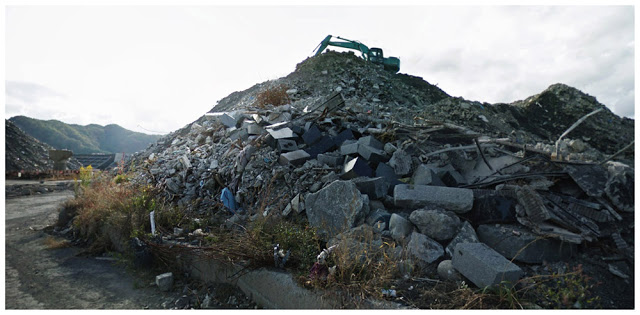
More than one year after the Tōhoku earthquake and resulting tsunami, the devastation remains visible and the amount of work still to be done seems exceedingly daunting (some estimate 10 years). What remains of fishing villages and small cities, has been organized into huge mounds carefully separated by category: cars, boats, household debris, metal, fishing and oceanic supplies, with piles reaching as high as five stories and encompassing 5-10 city blocks. The following images were gathered from hundreds of miles of “virtual travel” along the eastern coast of the Tōhoku region via Google Earth Street View. During these travels it was extremely rare to come across any street view in the region that didn’t have a crew diligently working or small groups of fisherman trying to go about their daily lives.
I want to help be a part of the rebuild… and not by just taking photos or print sales to donate cash to foundations like the Red Cross, but with actual hands-on physical labor. I plan on working with the nonprofit Disaster Relief Organization It’s Not Just Mud (INJM). After “visiting” hundreds miles of coastline via streetview during the creation this series, I have not been able to stop thinking about the people affected from this disaster. Maybe I can relate to these small remote villages because I also live in a remote village, or maybe it was seeing the destruction so clearly in near real-time, block by block for miles and miles? Assisting in the relief efforts is something that I NEED to do, not just want to do. My goal is to assist in any capacity necessary with INJM, as well as, making this an annual effort on my part. I will be documenting my efforts and will post photos both during and after my trip.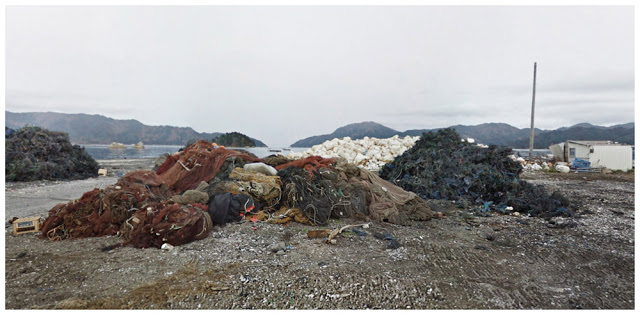
I can’t make this happen without your help. All the images in this series are all for sale and 100% of the proceeds contributing to any requisite travel costs. Any remaining funds will be donated to It’s Not Just Mud to help aid in their continued efforts. For more information about It’s Not Just Mud and its recent projects, visit the website at itsnotjustmud.com.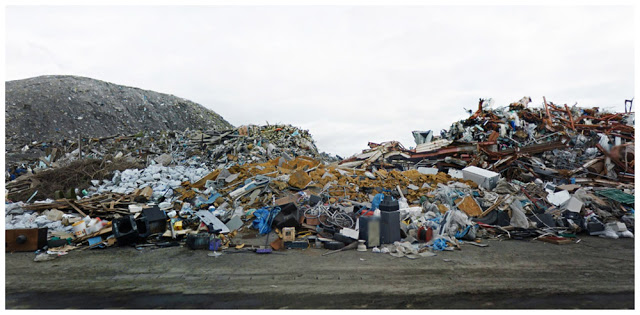
The 9.0 undersea megathrust earthquake off the Pacific coast of Tōhoku, Japan, occurred on Friday, March 11, 2011. It was the most powerful known earthquake to have ever hit Japan, and one of the five most powerful earthquakes in the world, since modern record-keeping began in 1900. The earthquake triggered powerful tsunami waves that reached heights of up to 40.5 meters (133 ft.) in Miyako in Tōhoku’s Iwate Prefecture, and which, in the Sendai area, traveled up to 10 km. (6 mi.) inland. The earthquake moved Honshu 2.4 m. (8 ft.) east and shifted the Earth on its axis by estimates of between 10 cm. (4 in.) and 25 cm. (10 in.).
On March 12, 2012, a Japanese National Police Agency report confirmed 15,854 deaths, 26,992 injured, and 3,155 people missing across twenty prefectures. The report also indicated 129,225 buildings were totally collapsed, with a further 254,204 buildings ‘half collapsed’, and another 691,766 buildings partially damaged. Around 4.4 million households in northeastern Japan were left without electricity and 1.5 million without water. Early estimates placed insured losses from the earthquake alone at $14.5 to $34.6 billion (in U.S. funds). The World Bank’s estimated economic cost was $235 billion (U.S. funds), making it the most expensive natural disaster in world history.
Posts on Lenscratch may not be reproduced without the permission of the Lenscratch staff and the photographer.
Recommended
-
Shinichiro Nagasawa: The Bonin IslandersApril 2nd, 2024
-
The International Women in Photo Association Awards: Lorraine Turci: The Resilience of the CrowMarch 16th, 2024
-
The International Women in Photo Association Awards: Rayito Flores Pelcastre: Chirping of CricketsMarch 14th, 2024
-
The International Women in Photo Association Awards: Louise Amelie: What Does Migration Mean for those who Stay BehindMarch 12th, 2024
-
Brandon Tauszik: Fifteen VaultsMarch 3rd, 2024

